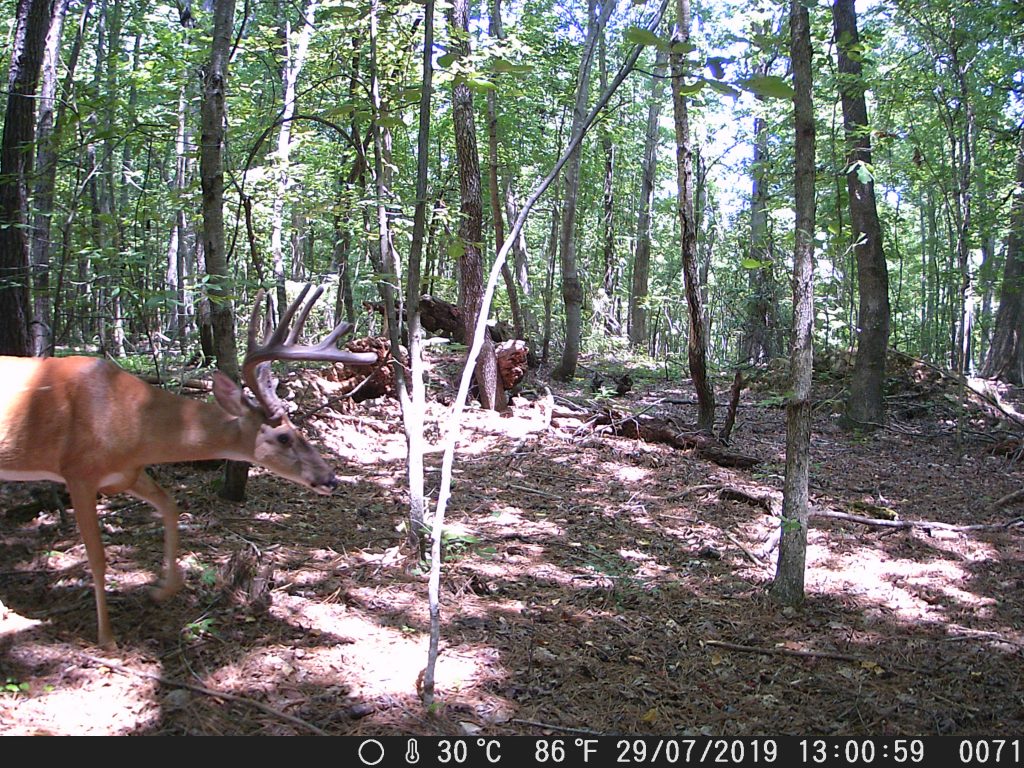Science informs the management of the Duke Forest, including efforts to manage wildlife. It is generally accepted that we have an overabundance of White-tailed Deer due to a lack of predators and other factors, but it was scientific investigations that prompted Duke Forest management to take action.
In the early 2000s, scientists using data from long-term vegetation plots on the Duke Forest noted a decline in plant species diversity and abundance, as well as damage to young pine plantations and natural forest regeneration. Initial spotlight surveys of deer in the Duke Forest revealed population densities that were over 3x the acceptable level, and since that time, Duke Forest management has administered a deer herd reduction program to address the negative impacts of overabundant deer.
While management continues to monitor the deer population every year through spotlight surveys, new approaches for estimating wildlife populations have become more common. This year, the Duke Forest has worked with two different research teams to examine new methods for monitoring deer.

Kaitlin Saxton, a Master of Environmental Management candidate at the Nicholas School of the Environment, is working with faculty advisor Dr. John Poulsen to compare methods for estimating deer populations on the Duke Forest. Kaitlin placed 29 wildlife cameras throughout the Korstian Division of the Duke Forest to capture images of deer (and other wildlife). The photos included distance markers that allow the number of deer in an image to be converted into a density value. In addition to the camera trapping, Kaitlin incorporated distance sampling into the data collected during the Duke Forest’s annual spotlighting surveys. Kaitlin will use this information to compare the results of the different sampling methods, as well as the amount of time and effort involved with each method.
Researchers from Wake Forest University’s Unmanned Systems Lab are also using the Duke Forest to test their drone detection protocols for estimating deer populations. The researchers will leverage the results of Duke Forest spotlighting data and Kaitlin’s camera trap data to assess the effectiveness and validity of using drones equipped with thermal sensors to detect deer in the Duke Forest. There are many advantages to using aerial surveys to estimate deer populations, including higher detection rates, the ability to randomly sample across the landscape, and avoiding biases introduced by road-based sampling. Drones are also a more cost effective and safer way to conduct aerial wildlife surveys than using human-occupied aircrafts.
Duke Forest management eagerly awaits the results of these research projects to understand how best to monitor the deer population it manages. As a teaching and research forest, management must be informed and shaped by science, and these research projects are great examples of how science guides the management of the Duke Forest.













